Trading Risk Management Strategy: The Ultimate Guide To Risk
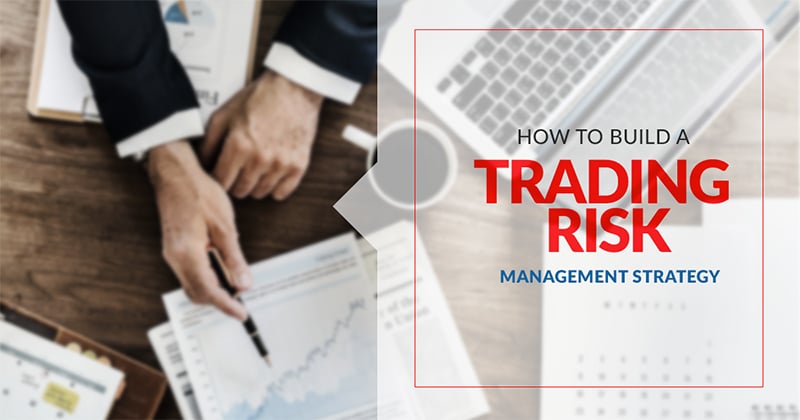
How to Build a Trading Risk Management Strategy
In this step-by-step guide, we’re going to discuss how to build a trading risk management strategy to create a risk-adjusted performance. This risk management trading PDF can create an unprecedented opportunity for growing your trading account in an optimal way.
Risk management is widely recognized among professional traders to be the most important aspect of your trading plan. Our team at Trading Strategy Guides has created this risk management trading PDF that explains the key components of a good money management strategy. Also, read the banker’s way of trading in the forex market.
Risk management is the absolute most important thing that you can learn.
We’re going to teach you how to stay in the game. Staying in the game and making money on a consistent basis it’s all we care about. We’re not in this to make a one-hit home run trade. Everyone who has been trading long enough in the forex market knows that’s not possible.
All of our market strategies have a trading risk-reward ratio of at least 1:2.
There are many different ways to manage your risk and to manage your own money but in the end, it’s all about your risk tolerance and preferences. However, you need to have some sort of risk management system to make money in FX trading.
Now…
Moving forward, we’re going to introduce you to the world of how a hedge fund manager really looks at trading the markets.
Table of Contents
Introduction: What is a Trading Risk Management Strategy?

Risk management is the process used to mitigate or protect your personal trading account from the danger of losing all your account balance. The risk is defined as the likelihood a loss will occur. If you manage the risk you have an excellent opportunity of making money in the Forex market.
Basically, risk management it’s just a method to control risk exposure when trading.
Risk management it’s like the foundation of a house. When you build a house you first start with the foundation layers and only then you start building the walls and the roof and everything else. On that note, risk management is the foundation of a successful trading plan.
We can basically break the risk management foundation into 3 layers:
- Risk Planning
- Trading Risk Reward ratio
- Position Sizing
Moving forward, we’re going to explore how one can use these risk parameters to generate superior risk-reward ratios for your trades.
Trading risk management expert Rob R has a great strategy for risk management.
How to Plan Your Trades (Risk Planning)
Trading Risk Reward Ratio
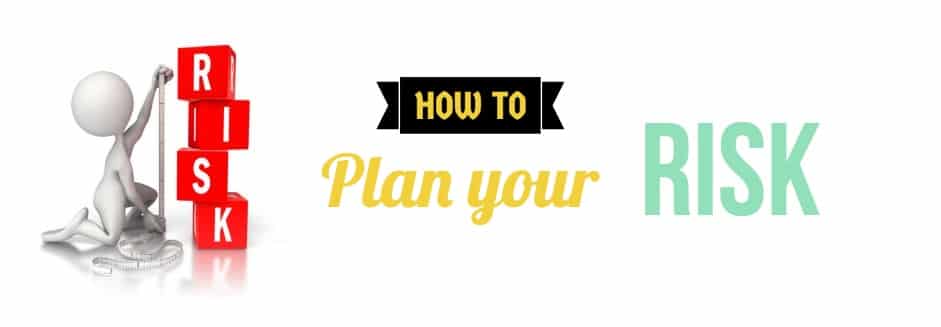
Planning your risk will help you maintain consistency with the risk we take trading the markets. Becoming a consistent trader is one of the biggest hurdles that you need to conquer and it can only be done right from day one if you plan your risk exposure.
So, when it comes down to planning your risk, we need to be able to answer one simple question:
How much are you willing to risk per trade?
Well, ultimately, the answer to this question is a personal preference and it comes down to your risk tolerance. However, professional money managers recommend not risking more than 2% on any particular trading idea.
The main advantage of the 2% risk rule is that you’ll be able to take more trades at any particular time. Conversely, the more risk per trade you take intuitively you’ll be prone to make fewer trades.
The risk per trade is something that you’ll probably begin to refine over time, but don’t try to ramp it up too fast until you’ve got some good trading experience behind you.
How to determine the risk-dollar amount is simple:
Risk Dollar Amount = Account size * %Risk
For example, if your account balance is $5,000 and your risk tolerance is 2% your dollar risk amount is $100 per trade.
Risk Dollar Amount = $5,000 * 2% = $100
By calculating the risk-dollar amount we can ascertain how much we’re going to lose if the trade goes against us. In our particular case, the maximum loss would be $100.
Risk planning will help you better control the mental part of trading because you already know in advance how much you’re going to make if the trade goes in your favor or how much you’re going to lose if the trade goes against you.
Trading Risk Reward Ratio: What It Is and How to Calculate It

The trading risk-reward ratio simply determines the potential loss versus the potential profit on any given trade.
How to measure the risk-reward ratio?
The risk is simply defined as the price distance between your entry and your stop loss.
The reward is simply defined as the price distance between your entry and your take profit.
In essence, in order to calculate the risk-reward ratio you only need three components:
- Entry Price
- Stop Loss
- Take Profit
In order to determine the risk to reward ratio, you simply need to divide the potential “Total Risk” to the potential “Total Reward:”
Risk Reward Ratio = Total Risk / Total Reward
In order to figure out your total risk, you need to apply this simple formula:
Total Risk = Pip Value X (Entry Price – Stop Loss Price)
In order to figure out your total reward, you need to apply this simple formula:
Total Reward = Pip Value X (Entry Price – Take Profit Price)
As an example, if you’re planning to enter a long position on EUR/USD at 1.2200 with a stop loss at 1.2150 and a profit target at 1.2300 you’re basically having a risk-reward ratio of 1:2.
Risk Reward Ratio = $1 x (1.2200 – 1.2150) / $1 x (1.2200 – 1.2300) = 50 / 100 = 1 / 2
We want to have a strategy with a higher trading risk reward ratio as this will ensure our profitability in the long term.
For example, if your risk to reward ratio is 1:2, it means your win rate has to be above 33% to make money in the long term (see Figure below).
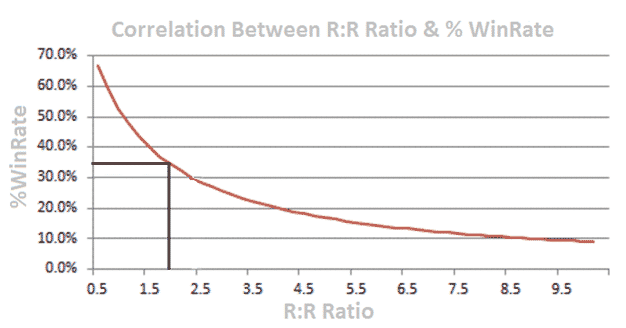
How to Determine Position Sizing in Trading

Position sizing answers another important question, namely: How big a particular trade should be?
Is it arbitrary?
Or should you always be buying 5 lots or 1 lot?
There are several ways you can determine how big that position should be. It’s entirely under your control to determine how big your position should be.
In order to be able to calculate our position sizing we need to know three things:
- Account size.
- How much of that account you want to risk – percentage-wise. We have examined this under the Risk planning section.
- Stop Loss.
The basic formula for calculating your position size is:
Position size= (Account size * % Risk per Trade) / Stop Loss
Let’s imagine the following scenario where we have a fictional account size of $10,000. We have a risk tolerance of 2% per trade and based on our analysis, we figure out that we need 50 pips to stop loss.
Applying the above formula, it results that our position size should be 4 mini lots.
That was easy!
Next…
Let’s learn 4 tips on how to reduce risk on a trade.
See below:
How to Manage Risk When Trading
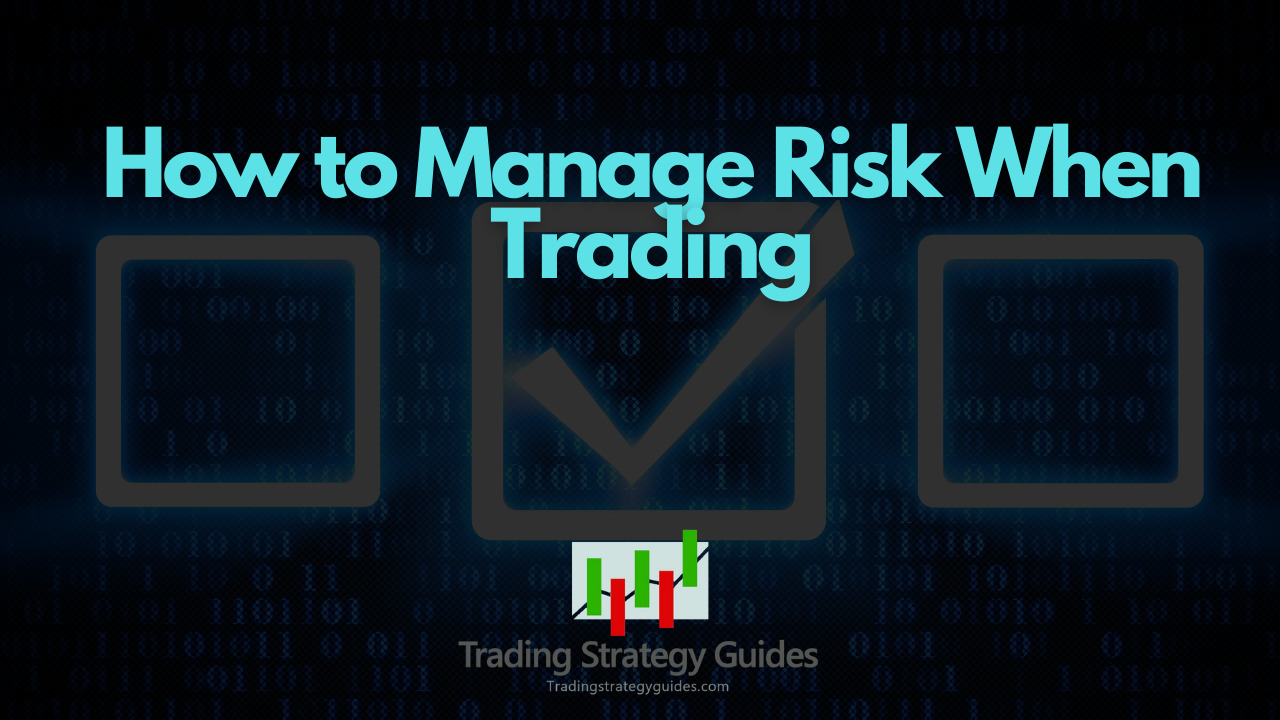
To reduce your risk on a trade you can do one of the followings:
- Moving your stop loss closer to your breakeven point
- Take off a percentage part of your position
- Hedge your position
- Don’t risk more than 2% per trade
Now, losses are part of the trading game, so make sure you don’t take the losses personally.
Don’t fall into the temptation of letting your losses run. But instead, make sure you constantly manage your position. That’s the only way to stay on the top of the trading game.
You also have to be ready to jump back on a trade, when the market momentum shifts back into your favor.
Legendary trader Paul Tudor Jones believed that
“Most people lose money as individual investors or traders because they’re not focusing on losing money. They need to focus on the money that they have at risk and how much capital is at risk in any single investment they have.”
Now…
If you want to increase your risk/reward ratio we have 5 tips to give you.
See below:
How to Increase Your Risk/Reward Ratio?
The most effective ways to increase your risk-to-reward ratio are:
- Improve your entries. Check out our guide on how to get perfect entries in any market here: Trading Entry Strategies – Improve your Entries with Powerful Tricks.
- Reducing your stop loss can also actively give you a much better risk-reward ratio. Check here two tips to reduce stop loss.
- Study the winning trades that worked instantly
- Let your winner run
- Improve your exit strategy
You can increase your risk-reward ratio immediately by getting that sweet spot entry or reducing the stop loss.
But…
One of the best things you can do to increase your win rate and the risk-reward ratio is to do more of what works and less of what doesn’t work.
Let me explain:
You need to study your winning trades to find out what works. You must dissect your PnL and see which types of trades give you the best risk-reward ratio.
So, the idea is to find a common pattern throughout the trades with high risk-reward ratios that you can mirror.
But, to do that you need to keep track of your trading activities through a trading journal.
If you still don’t journal your trades, you’re doing something wrong.
But, don’t worry we’ve got your back.
See the best way to create a trading journal and find your edge HERE.
Moving forward we’re going to discuss two of the most popular risk management strategies:
- Fixed Fractional Money Management Strategy
- Fixed Ratio Money Management Strategy
Fixed Fractional Money Management Strategy
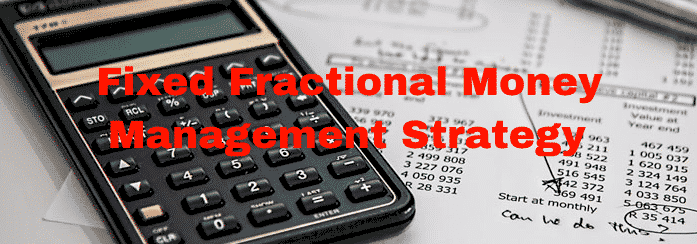
Using a fixed fractional money management strategy means only risking a percentage of your trading account on each trade typically 2%.
For each trade you take, you can’t risk more than 2%.
The advantage of a fixed fractional strategy is that as your account grows, you’re increasing your position size with the growth of your account. So, you’re getting the same kind of results as you would be if your account is $10k or $50k and so on.
However, the disadvantage is that if your account has a drawdown, all of a sudden your risk of ruin increases. By using a fixed ratio strategy you can tackle this disadvantage.
Fixed Ratio Money Management Strategy

The fixed ratio strategy uses a specific position size that increases and decreases with your account balance.
Let’s consider the following scenario:
You’re having an account balance of $5,000 and your fixed position size is $10 per pip. The next step a trader will follow when applying a fixed ratio money management strategy is to decide when to increase your position size. Of course, this all comes down to your preferences and risk tolerance.
For example, you can double your position size after you have made another $5,000 then your position size will increase to $20 per pip. This concept is known as DELTA.
In fixed ratio money management, the delta represents the number of profits you need to make until you increase your position size. In other words, you’re using the delta as a benchmark to increase your position size.
You can break down your Delta in different increments to better suit your risk profile. For example, you can use a position size of $1 per pip for every $1000 in your account. So obviously if you’ve got a $5,000 account, your position size will be $5 per pip. Once your account dollar grows to $6,000 after you’ve made an additional $1000 profit your position size will now grow to $6 per pip.
You’re basically using that ratio of increase depending on your initial capital.
Now …
Risk management is the absolute most important thing that you can learn. In our next section, we’ll present all the factors of why having good risk management is so important.
Why is Having Good Risk Management so Important?

While Forex trading can be fun, it does come with an inherent risk that you need to understand.
Having a trading risk management strategy is probably the most important aspect of your trading process because it will guarantee long-term survival throughout the ups and downs of your trading career.
Your number one priority as a trader should be capital protection because profits do care for themselves.
Applying risk control into your Forex strategy will enable you to be in control of your emotions because you have already determined how much you’re going to lose before jumping into a trade.
Risk management is going to permit you to trade in a smart way and give you the flexibility to choose how much you want to risk per trade in a way that will allow you to maximize your profits and minimize your losses.
If you apply the risk management principles taught through this guide you’ll have a much greater chance to survive in this Forex business. However, not following any money management rules has the potential to break your trading career.
The good news is that this risk management trading PDF is easy to grasp as there is nothing complicated about money management.
Moving forward…
For traders that want to learn more about trading risk management see below our top 5 risk management books.
What are the Best Trading Risk Management Books
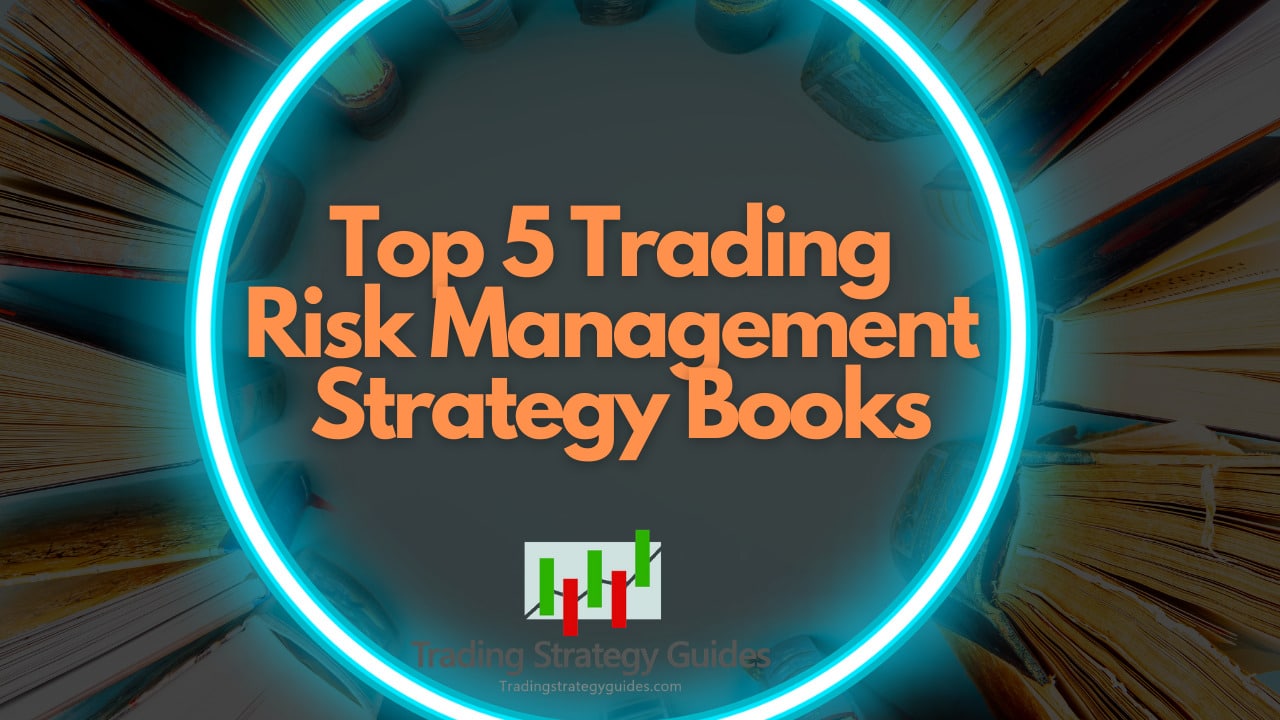
Below you can find the list of the 5 best trading risk management strategy books:
- The New Trading for a Living: Psychology, Discipline, Trading Tools and Systems, Risk Control, Trade Management – Amazon link.
- A Practical Guide to Risk Management – Amazon link.
- Financial Risk Management For Dummies – Amazon link.
- Practical Methods of Financial Engineering and Risk Management: Tools for Modern Financial Professionals – Amazon link.
- Risk and Money Management for Day and Swing Trading: A complete Guide on how to maximize your profits and minimize your Risks in Forex, Futures and Stock Trading – Amazon link.
There aren’t many books that focus completely on risk management stock trading.
But, for everyone that wants to go one extra mile to understand risk management these books are well versed.
Conclusion – Trading Risk Management Strategy
Not having a trading risk management strategy we’re basically risking the entire trading capital and risk of getting a margin call. Smart trading also means that you need to have a trading risk-reward ratio of a minimum of 1:2 in order to survive in the long term.
Money management has proven many times to turn a losing strategy into a winning one. So to overcome the limitations of your trading strategy you should focus on your trading risk management strategy. Be sure to read our guide for the best trading strategies!
Thank you for reading!
Please leave a comment below if you have any questions about this strategy!
Trading Risk Management Strategy PDF Download
Please share this Trading Risk Management Strategy PDF/Infographic below and keep it for your own personal use! Thanks, Traders!
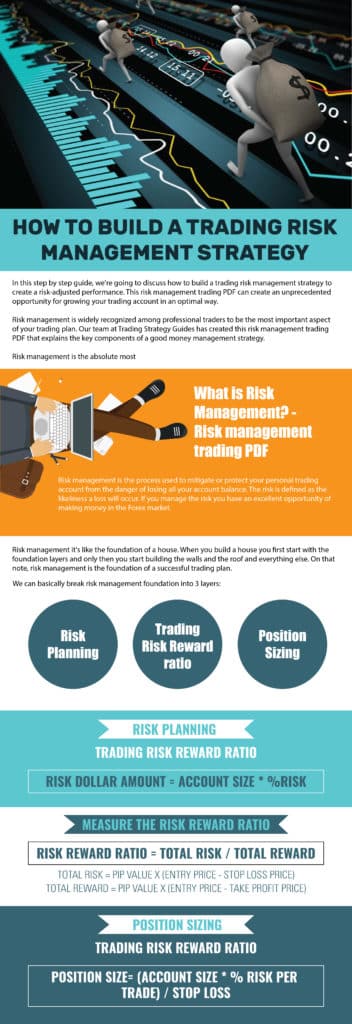



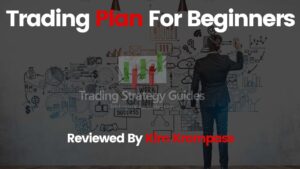
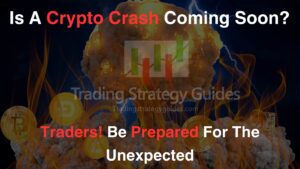


Thank you so much for imparting your forex knowledge to us forex traders. We will learn from the mistakes and advice of others and profit exponentially in Jesus Mighty Name Amen!
Great info
Thank you!
This article is very wonderful and self educating, there’s no need for physical tutor, everything I never new in the world of forex has been broken down to my long awaited forex trading anger. I am commenting from Nigeria. Tnx a lot.
thanks for sharing post about risk mangagement
Thank-you!! This is extremely helpful in both it’s practicality and simplicity.
I’m incredibly grateful to have found this.
It’s our pleasure that you could find our content useful.
Whats up! I just would like to give an enormous thumbs up for the great info you may have right here on this post. I will probably be coming back to your blog for more soon.